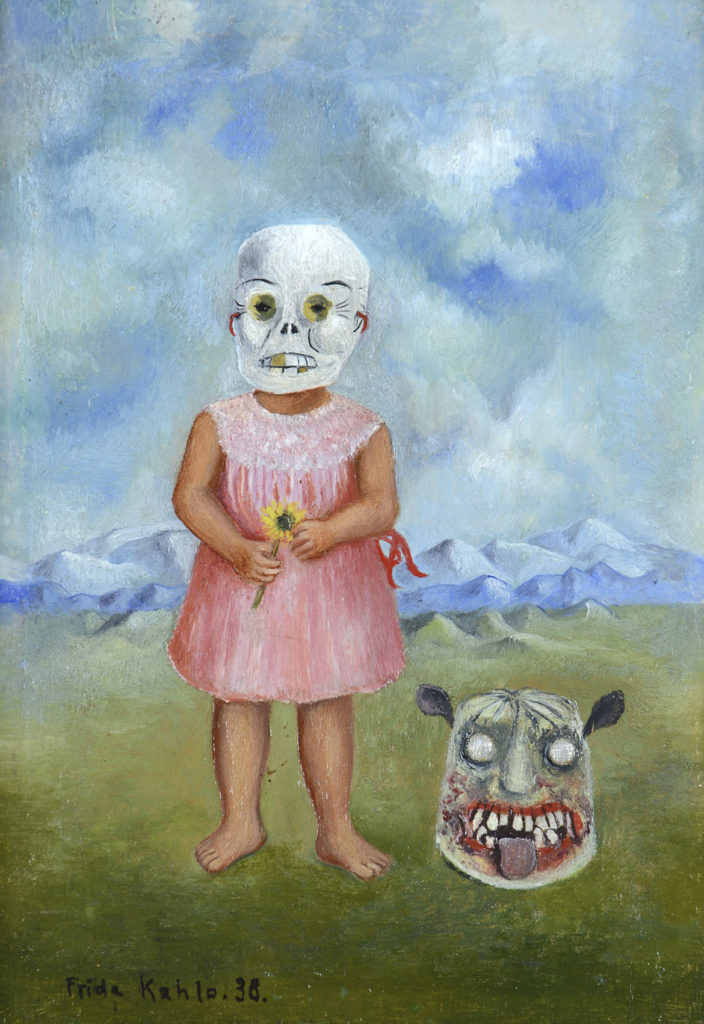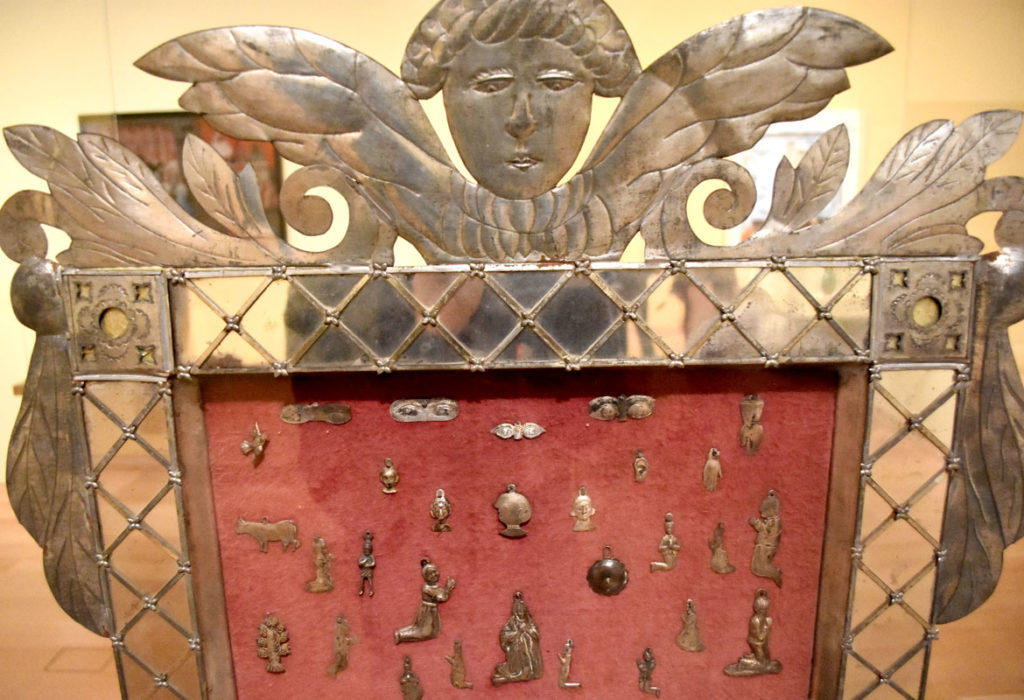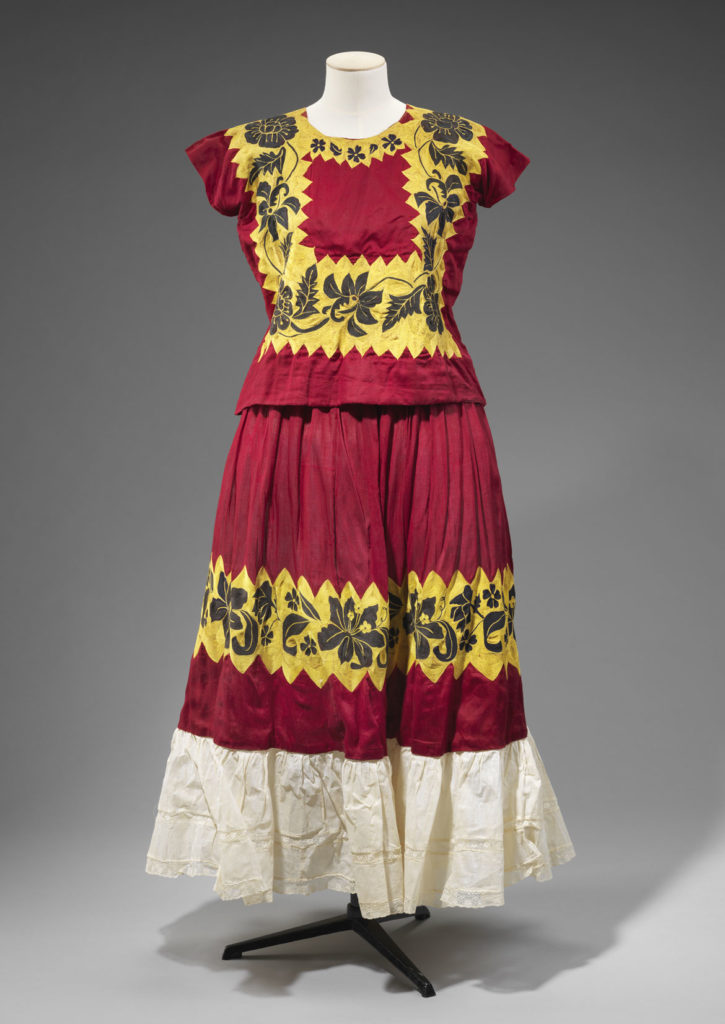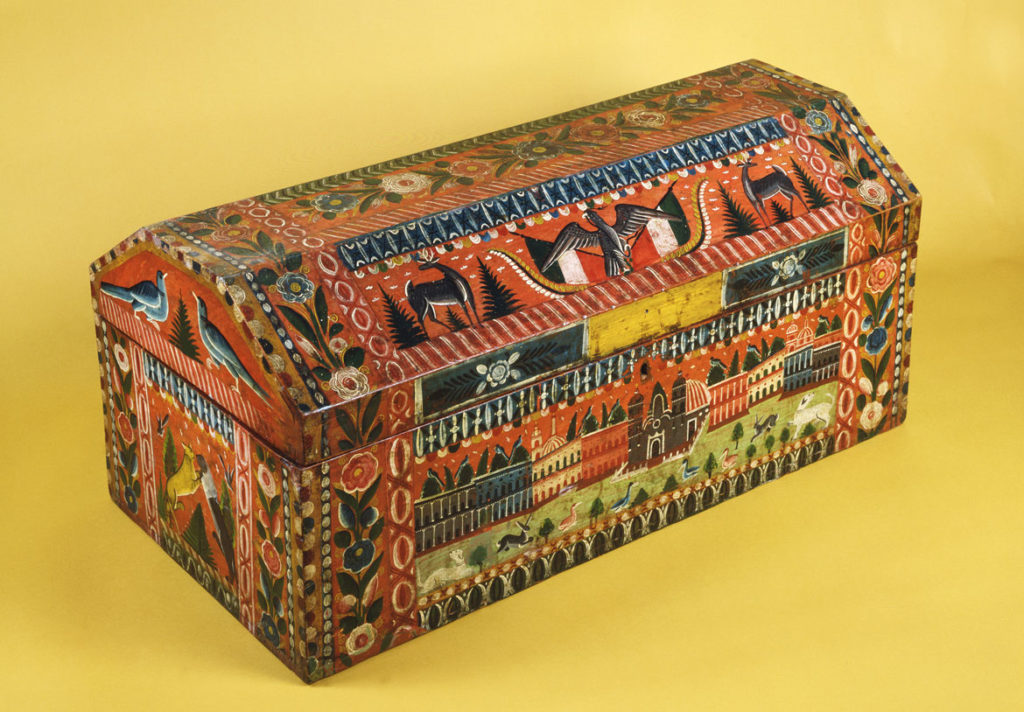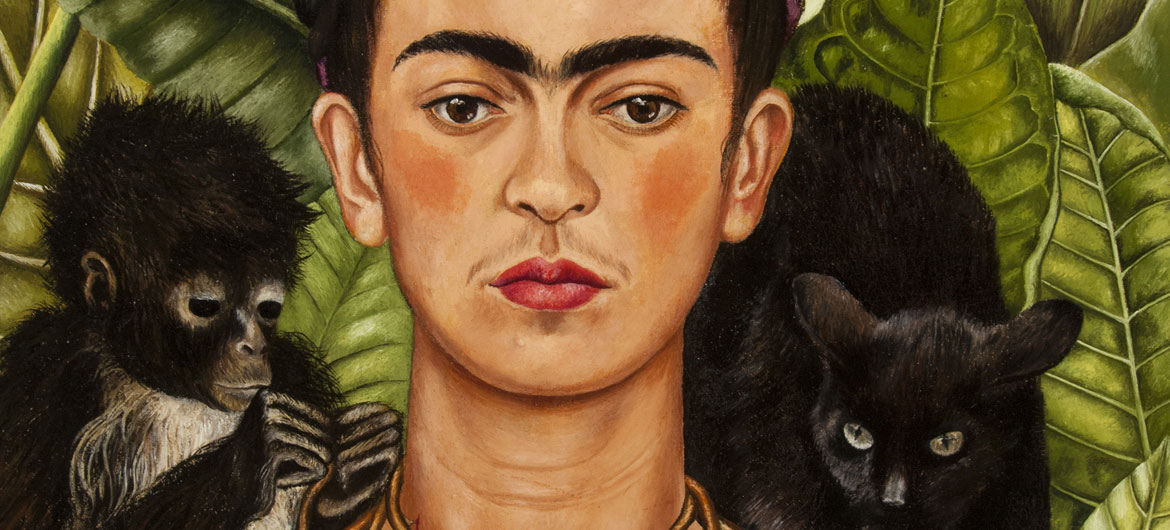Kahlo’s riveting 1940 painting “Self-Portrait with Hummingbirds and Thorn Necklace” is all the reason you need to see “Frida Kahlo and Arte Popular” at Boston’s Museum of Fine Arts from Feb. 27 to June 16, 2019.
Here’s Kahlo in her early 30s, at the peak of her artistry, staring out at us from under her prominent brow. She’s posed in front of a screen of lush tropical leaves. A monkey and black cat perch on her shoulders. Silver butterflies alight in her hair. A necklace of thorns with a hummingbird pendant pricks her throat, drawing blood. Her brown eyes are magnetic—serious, regal, fierce, defiant, a bit sad.
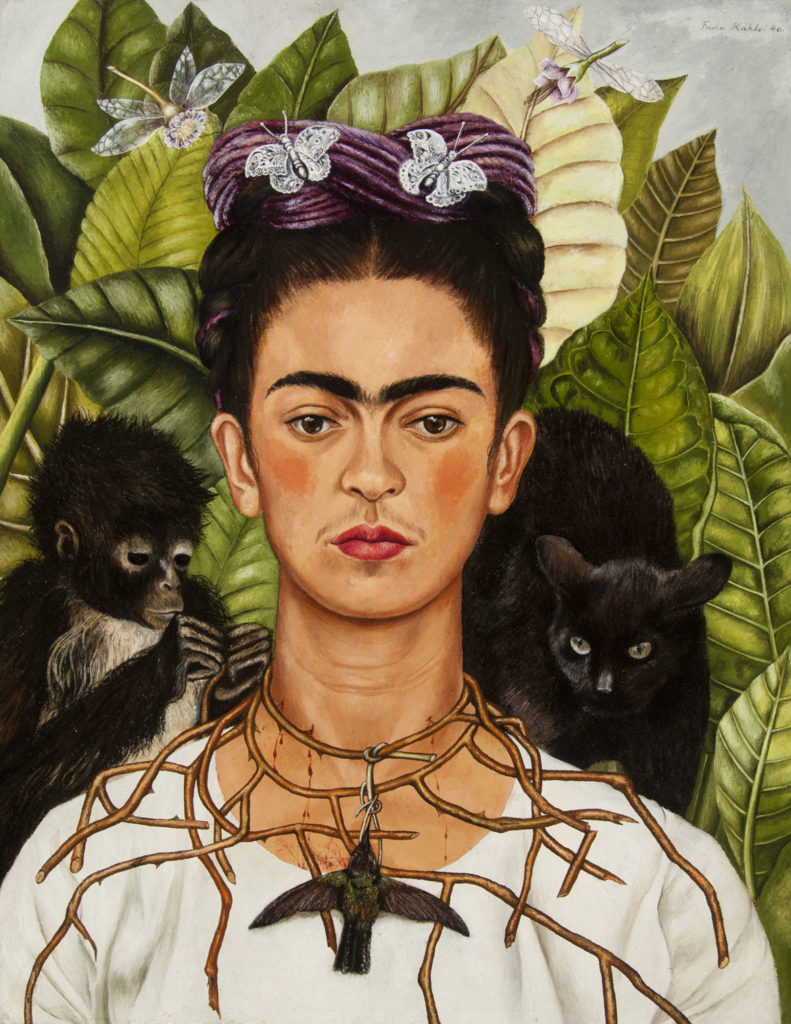
Kahlo was born July 6, 1907, but she was wont to claim she arrived in 1910, coinciding with the start of the Mexican Revolution. She came of age as the civil war subsided around 1920. And she embraced mexicanidad, an intellectual and political effort to rebrand Mexico by asserting a pride in being a modern Mexican and the nation’s unique culture arising from Spanish Catholic conquest of indigenous pre-Columbian societies.
After the civil war, they were “trying to construct a new narrative for Mexican art that speaks of unification,” MFA curator Layla Bermeo says.
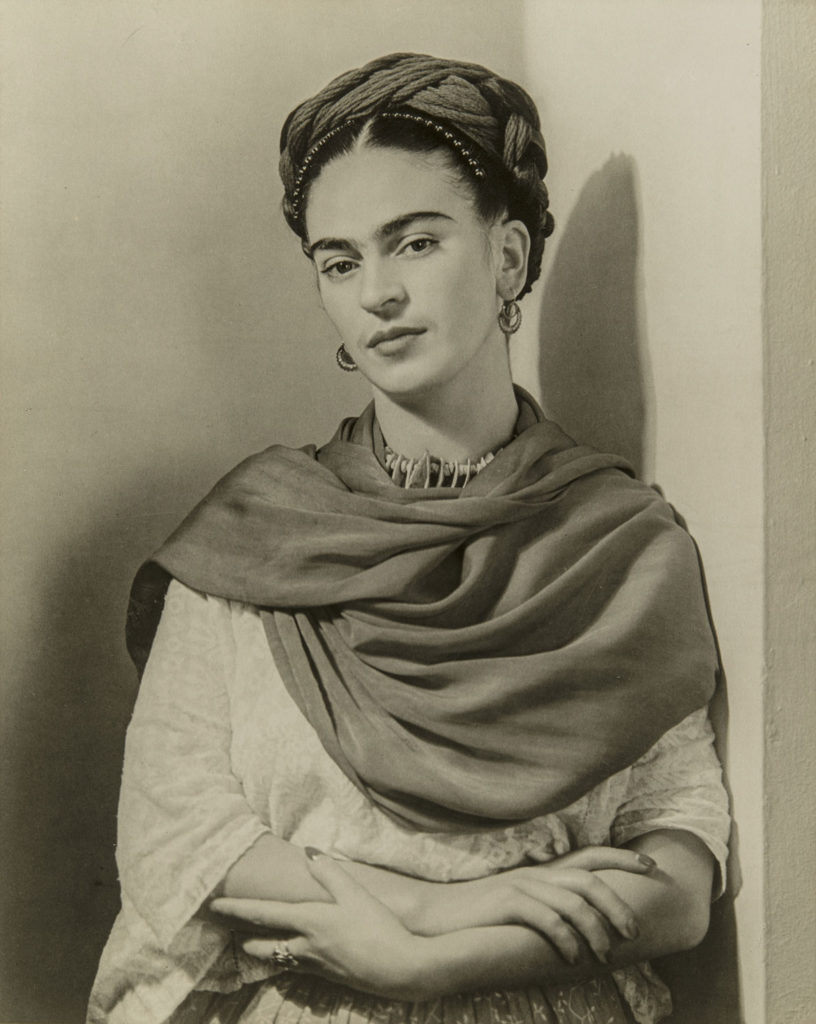
French cuisine and architecture lost cachet. Instead collecting Mexican arte popular—folk art—and adopting indigenous fashion became stylish. Kahlo assumed the Tehuana dress—a traditional dress of Zapotec women from Oaxaca—as her look. “Kahlo and politically-minded elites in Mexico City acquired handmade objects from rural communities as a romanticized celebration of Mexico’s indigenous and working-class peoples,” says a sign opening the exhibition. “It was these collectors who defined and promoted arte popular as Mexico’s new national art, connected to both ancient histories and modernist aesthetics. By examining some of the social and political ideas of the post-Revolutionary period, this exhibition offers contexts for Kahlo’s paintings and arte popular, and explores the dialogues between the two.”
“Frida Kahlo and Arte Popular” is a modest exhibition, offering eight paintings by Kahlo in four galleries, plus works by her contemporaries and lots of Mexican folk art. It’s a rare chance to see Kahlo’s amazing art around here. The exhibition aims to illustrate a thesis: Kahlo is talked about as a surrealist, a feminist, a communist, but you don’t really understand what she’s about unless you know how much folk art inspired her.
If this is the kind of coverage of arts, cultures and activisms you appreciate, please support Wonderland by contributing to Wonderland on Patreon. And sign up for our free, weekly newsletter so that you don’t miss any of our reporting.
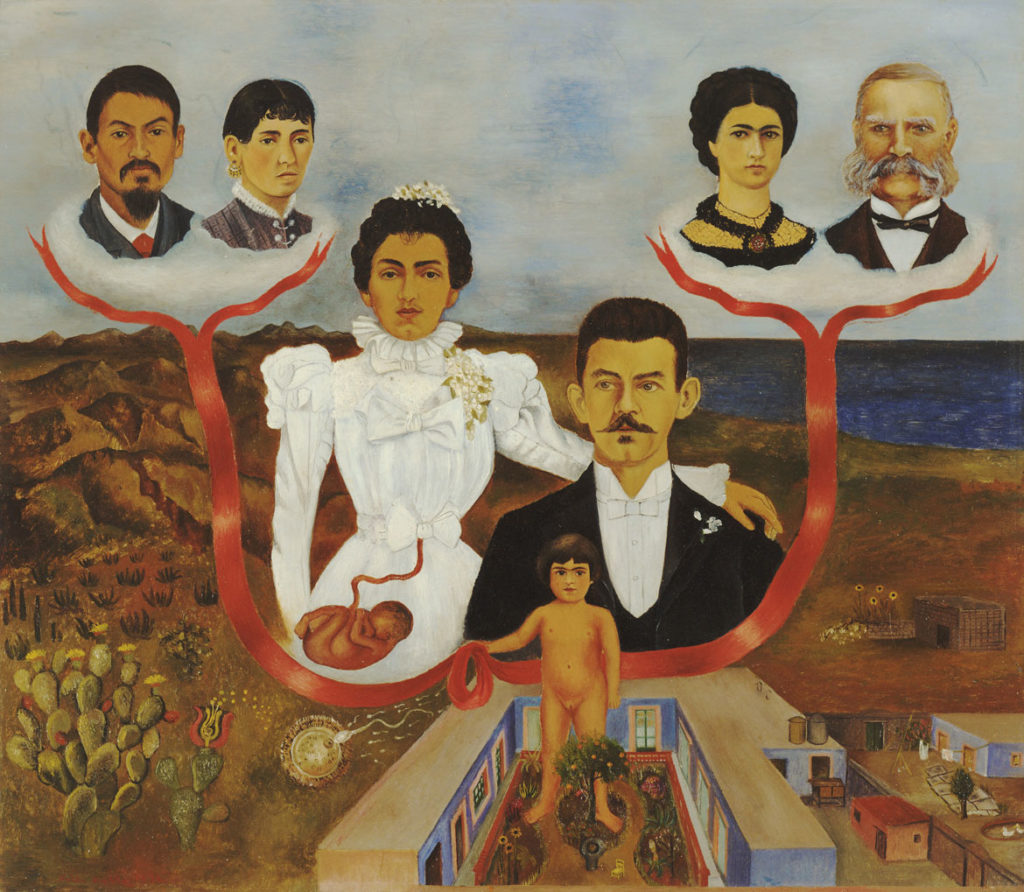
Kahlo’s 1936 painting “My Grandparents, Parents, and I (Family Tree)” depicts her as a fertilized embryo, as a fetus, and as a girl at her childhood home. Her parents and grandparents float above her. Her father was the son of Hungarian Jews in Germany. He immigrated to Mexico in 1891 at age 19 and became a professional photographer. (Kahlo assisted in his studio.) Her mother was born in Mexico, a Catholic woman from a Spanish-indigenous family.
Kahlo grew up middle class and Catholic. Kahlo “adored bloody depictions of Christ,” Victor Zomudio-Taylor wrote in the catalog to the 2007 Kahlo retrospective that originated at Minneapolis’s Walker Art Center. She joined the communist party as a young woman. Then in September 1925, a bus Kahlo was riding was hit by a streetcar. A metal handrail stabbed into her. She broke ribs and a foot, fractured her spine and pelvis. The rest of her life was filled with surgeries, bed rest, painful corsets and back braces. She took up painting during her initial recovery.
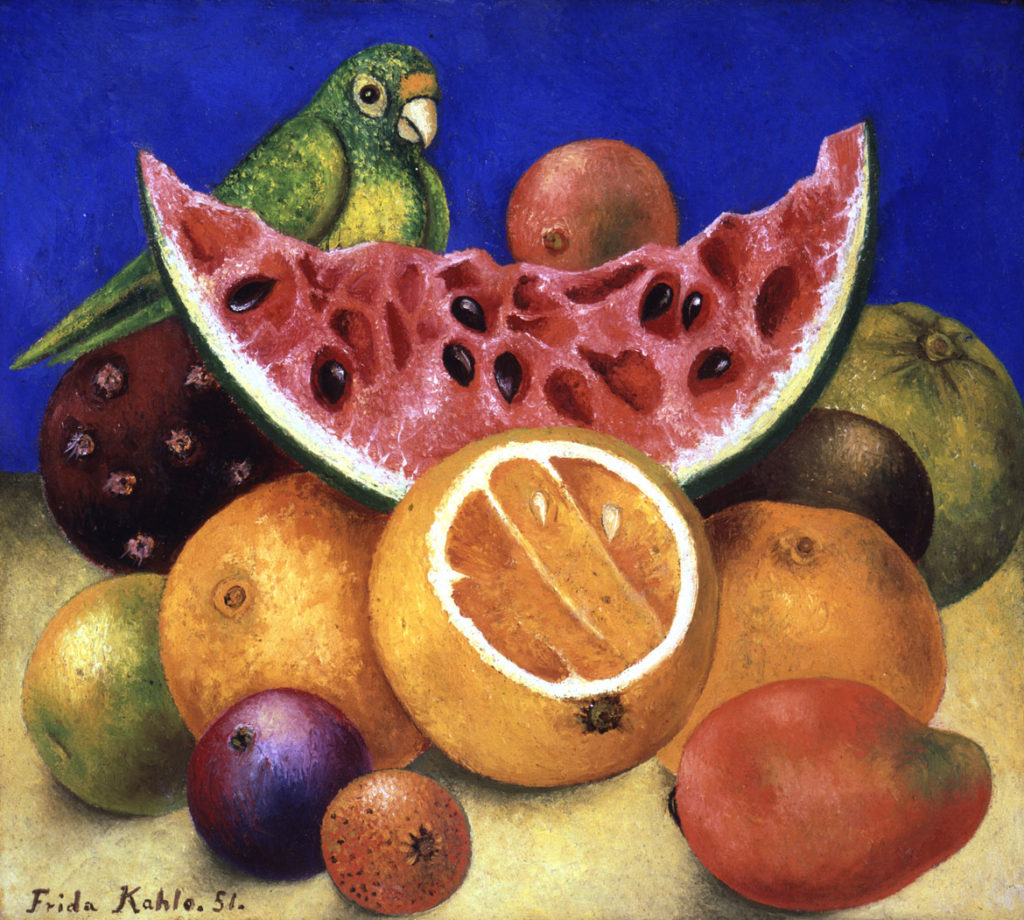
Then she met Diego Rivera, the Paris-trained modernist painter who had returned home to Mexico to paint mexicanidad murals visualizing the new Mexican identity and imagining a dazzling industrial, communist future. “Kahlo was part of larger artist movements,” Bermeo says. The exhibition is filled out by her artistic peers—Rivera, Maria Izquierdo (“probably the most famous woman artist working in Mexico” then, Bermeo says), Rosa Rolanda, Edward Weston, Gabriel Fernández Ledesma, Miguel Covarrubias, Henriette Theodora Markovitch (Dora Maar).
Kahlo and Rivera’s relationship was a tempestuous romance. (Watch this home movie of them together.) They married in 1929, when she was 22 and he was 42. They divorced in 1939 and married again a year later. He had affairs. She had affairs. She had a series of miscarriages as her broken body was unable to carry her into motherhood.
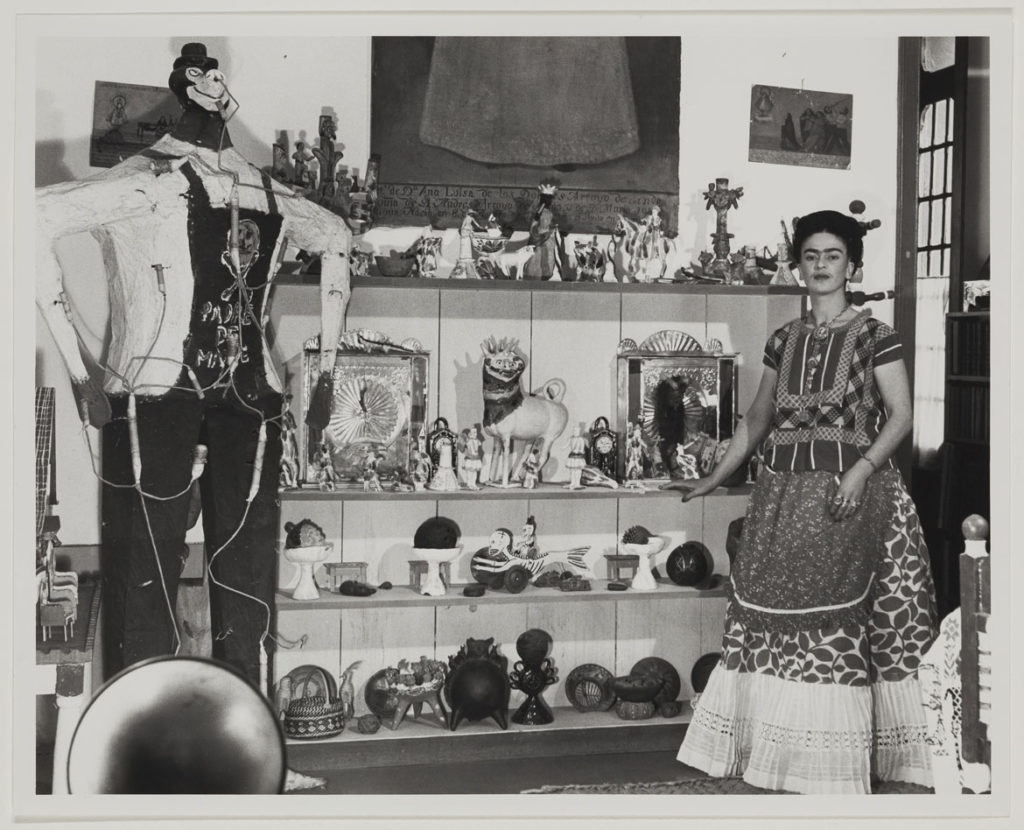
Together Kahlo and Rivera collected pre-Columbian ceramics, papier-mâché skeleton “Judas” figures (representing “any kind of betrayer”), coconuts carved with faces, toys, masks, ceramic beasts, milagros. Traditional Mexican still-life paintings inspired three of Kahlo’s still-lifes here of juicy fruits from 1938 and ’51. Bermeo says Kahlo collected ceramics and textiles decorated with floral patterns that inspired the “tight foliage backgrounds” in her 1928 painting “Dos Mujeres (Salvadora y Herminia),” owned by the Museum of Fine Arts, and “Self-Portrait with Hummingbirds and Thorn Necklace.”
When Kahlo taught in 1943 and ’44, she told her college students “to train their eye by looking at real life, particularly popular and indigenous practices,” Zomudio-Taylor wrote.
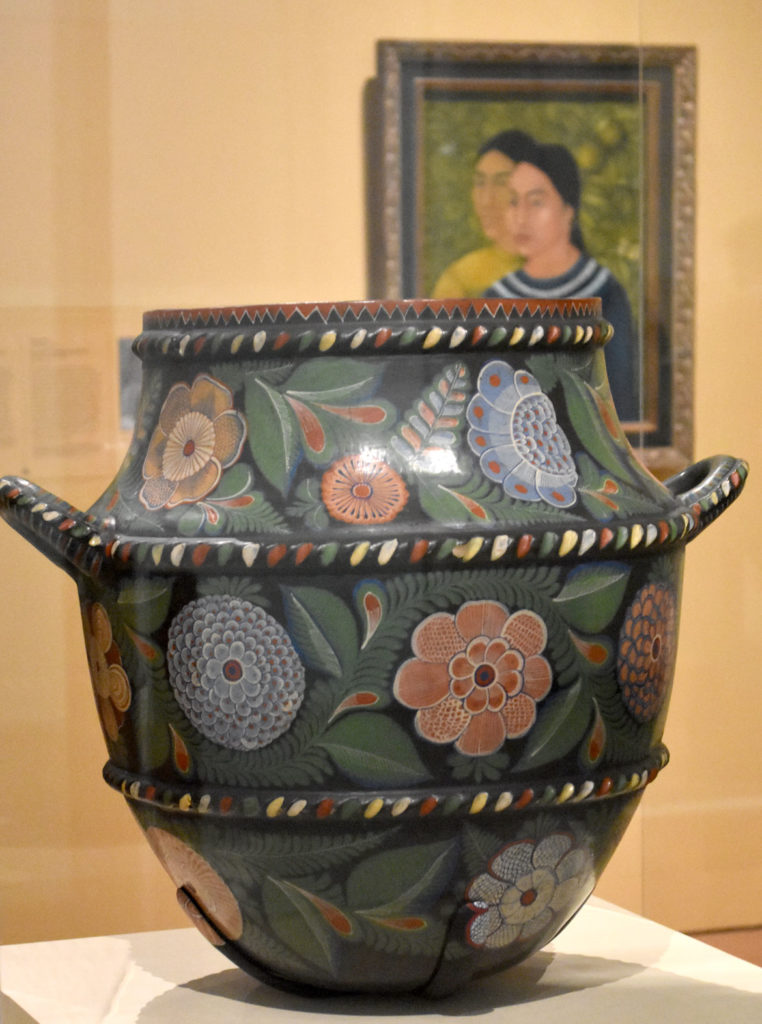
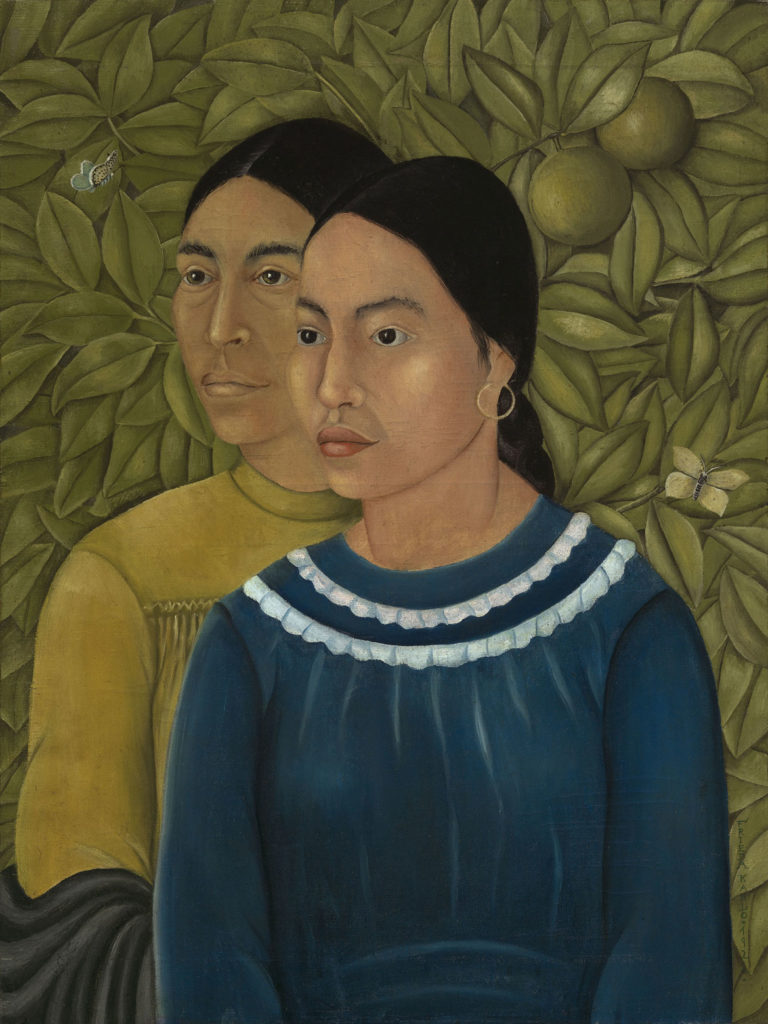
For Kahlo, participating in collecting folk art aligned with her communist politics. It was a way of signaling solidarity with the people. At the same time, it paralleled Pablo Picasso (whom Rivera had connected with while living in Paris), the Cubists and other modernists’ artistic trick of finding fresh creative energy by mining the “primitive” styles of children, the mentally ill, ancient cultures and the societies around he world that Europeans overran. “’Primitivism’ offered a reservoir of inspiration, forms, materials and outlooks that function as an antidote to and critique of the dehumanizing aspects of modernity,” Zomudio-Taylor wrote.

“One of her key contributions to modernism was her transformation of the Mexican religious genre of the ex voto,” Zomudio-Taylor added. The Christian ex votos or retablos are generally small narrative paintings expressing thanks for blessings and healing miracles believed to be received from saints. They must have appealed to a woman craving healing for her damaged body. She and Rivera collected more than 400 ex votos, Bermeo says. Kahlo channeled the energy of these raw, passionate, bloody, visionary Catholicism artworks.
Ex votos inspired Kahlo to paint on metal—as in her family tree painting—and provided a model outside the rules of academic painting. She frequently adopted the ex voto motif of the banner filled with text, as in her 1939 painting “El suicidio de Dorothy Hale (The Suicide of Dorothy Hale)” (on view here) of a woman falling from a building to her death.

“She is inspired by folk art. But she is not a folk artist,” Bermeo says. “Kahlo created an entirely new painting, neither portrait nor retablo.”
The French Surrealists embraced her as a kindred soul. Andre Breton and Marcel Duchamp organized a 1939 exhibition in Paris of her painting along with Mexican folk art. “One of the reasons she was frustrated was Breton was not showing folk art as an inspiration for Frida Kahlo’s painting, but as equivalent,” Bermeo says. In part, her objection was Kahlo “firmly associated folk art as something from the past.”
Kahlo’s paintings often look surreal, but they’re right out of her life. In “Self-Portrait with Hummingbirds and Thorn Necklace,” for example, the cat and monkey were actually her pets. The silver butterflies were actually broaches that she owned. Her paintings are a sort of visionary realism freighted with symbolic meanings. They’re rooted much more in Mexican religious painting of miracles and bloody martyrs than in, say, melting clocks.
Kahlo’s necklace of thorns evokes the imagery of Christian suffering and martyrdom, referencing the crown of thorns placed on the Jesus’s head during his torture and execution. The thorns may be a metaphor for how she suffered through injuries, surgeries, miscarriages.
Hummingbirds symbolized reincarnation to the Aztecs, Kahlo biographer Hayden Herrerz notes in her 1991 book “Frida Kahlo: The Paintings.” In Mexican folk tradition, hummingbirds served as a charm that could “attract a lover gone astray or an unrequited love,” Zomudio-Taylor notes. So perhaps this canvas—painted during Kahlo and Rivera’s year of breakup and remarriage—is an allegory of heartbreak over the wayward Rivera.
Kahlo said a year before her death in 1954, “I never painted dreams, I painted my own reality.”
If this is the kind of coverage of arts, cultures and activisms you appreciate, please support Wonderland by contributing to Wonderland on Patreon. And sign up for our free, weekly newsletter so that you don’t miss any of our reporting.
